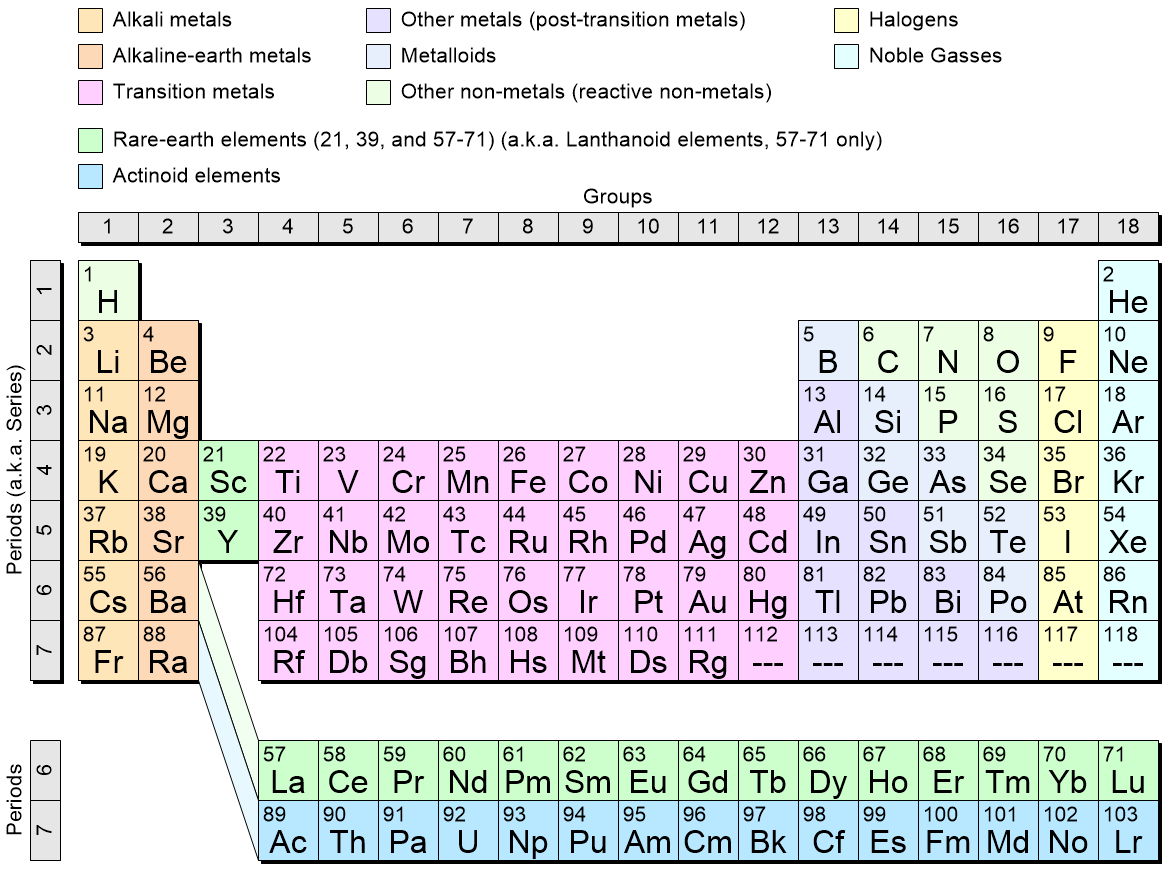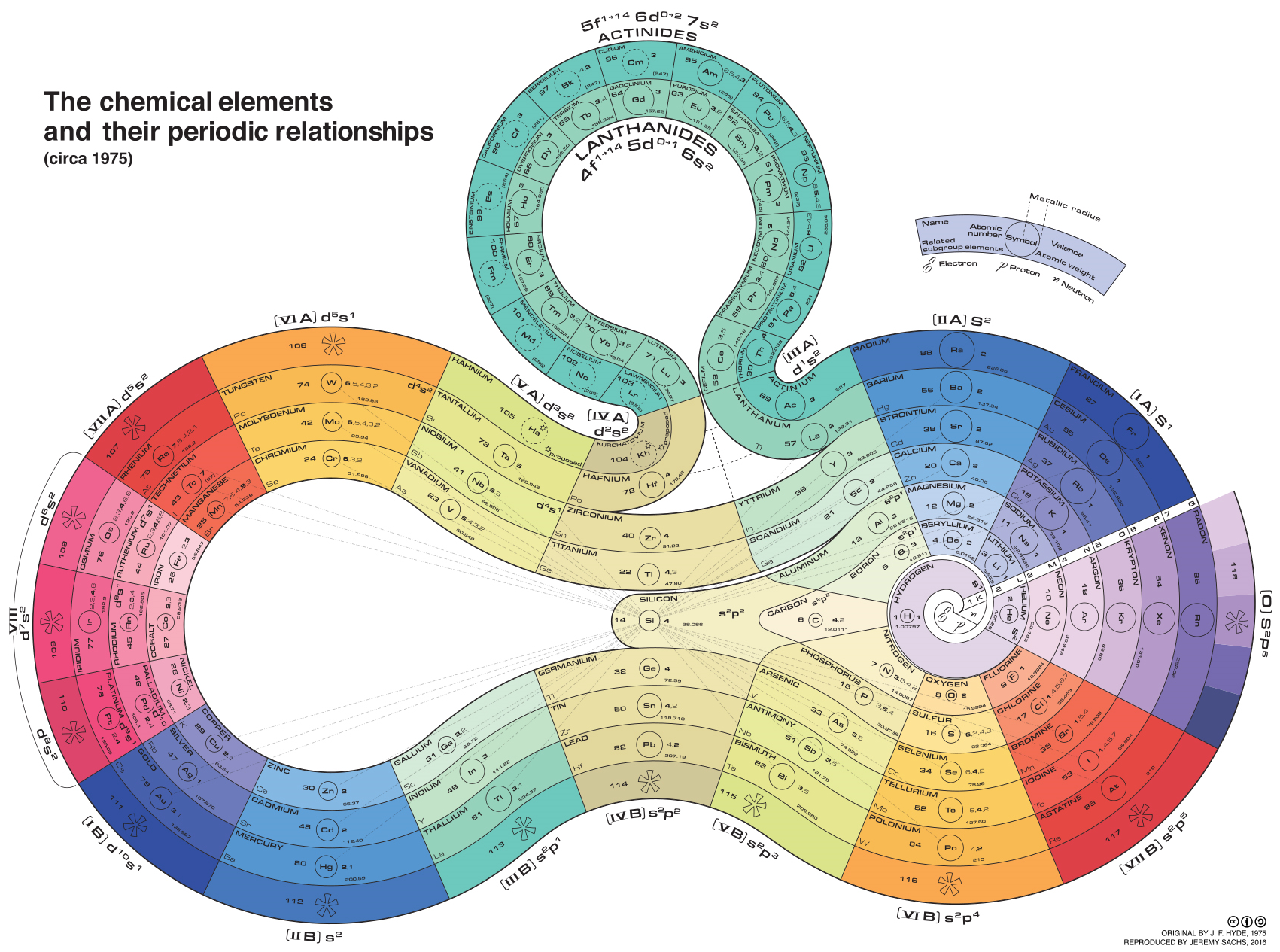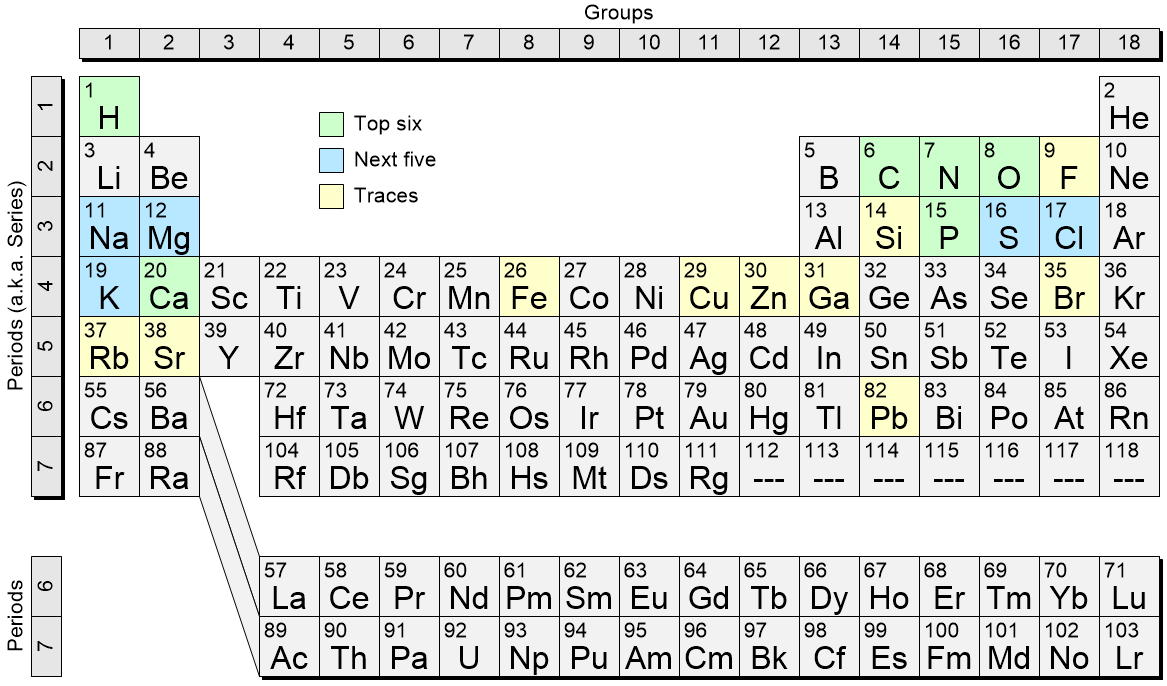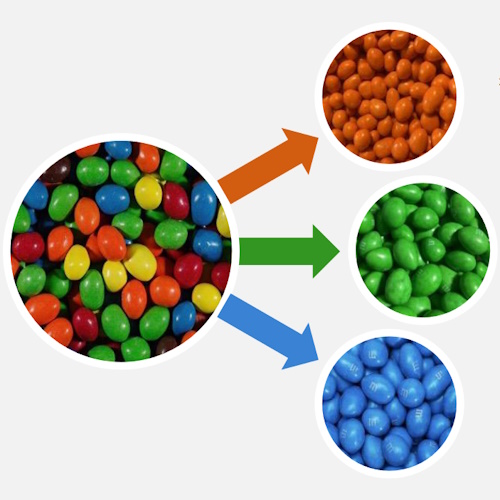I was just introduced to a company that has developed an affordable, clean, efficient way to separate out the isotopes of elements, including silicon and uranium. It was the potential for an isotopically pure form of silicon for use in both regular silicon chips and quantum computers that made my eyes open wide.
I’m constantly amazed by all the things I don’t know. Hmmm. On reflection that’s incorrect, because I don’t know what I don’t know (see also Known Unknowns: The Unsolved Mysteries of the Cosmos). What I should say is that I’m constantly amazed by the new nuggets of knowledge and tidbits of trivia to which I’m exposed, prior to which I was living in a state of blissful ignorance (which is one of the things I do particularly well, thanks to years of practice and self-denial).
Before we plunge headfirst into the focus of this column, I’d like to take a few moments to set the scene. I’m going to start off by talking about things like protons, neutrons, and electrons. And you’re going to start off by muttering, “I know all this,” to yourself. And then I’m going to tell you things you didn’t know, at which point you’re going to say, “well, color me surprised” (or words to that effect).
I vaguely remember when I was first introduced to the periodic table at high school. At that time, it seemed like just one more mind-bogglingly-boring thing to learn. It was many years before I learned how this table in the form that we all know and love came to be, and how bodaciously beautiful is the information it conveys.

A traditional periodic table representation showing atomic numbers (Source: Max Maxfield)
As a reminder (since high school is to be found far back in the rear-view mirrors of our lives for most of us), the numbers shown in the boxes in this illustration represent the number of protons. It’s the number of protons in an atom that determines the type of that atom; 1 = hydrogen (H), 2 = helium (He), 3 = lithium (Li), etc. This is known as the atom’s atomic number.
Each proton carries a single positive (+ve) charge. The protons are gathered in the heart of the atom, which is called the nucleus. Since positively charged protons will repel each other if left to their own devices, neutral neutrons act as a sort of glue binding the nucleus together. Protons and neutrons weigh the same (I’m simplifying things a bit). The number of protons and neutrons in an atom is known as its atomic weight. (I’m not showing atomic weights in the above diagram because I didn’t have the room.)
Based on what I’ve just said, we might expect each atom’s atomic weight to be an integer value (1, 2, 3, etc.), but such is not necessarily the case. Take silicon (Si), which has an atomic number of 14 (which may be represented as 14Si) and an atomic weight of 28.0855 (give or take). If the atomic weight were 28 on the dot, then we might reasonably suppose that, in addition to its 14 protons, the nucleus of a silicon atom contains 28 – 14 = 14 neutrons. So, where does the extra 0.0855 come from? I’m glad you asked.
The thing is that each atom may come in different flavors containing different numbers of neutrons. These flavors are called isotopes. For example, silicon has 23 known isotopes, only three of which are stable. These stable isotopes, which have 14, 15, and 16 neutrons, may be represented as 28Si, 29Si, and 30Si, respectively. The most abundant isotope is 28Si at 92.23%, with 29Si and 30Si contributing 4.67% and 3.10% to the party, respectively. It’s this mix of isotopes that results in non-integer atomic weights. One key point is that all the isotopes of an element have identical properties when it comes to chemical reactions (note the emphasis on “chemical” because this will be important later).
Speaking of chemical reactions, these are largely driven by electrons. And, speaking of electrons, by default, each proton in an atom has a corresponding electron carrying a single negative (-ve) charge. This makes the atom happy. If we strip one or more electrons away from an atom, we are left with (a) a positive ion and (b) an unhappy atom that wants its electron back. Contrariwise, if we somehow force an atom to accept one or more extra electrons, we end up in possession of (a) a negative ion and (b) an unhappy atom that wants to rid itself of any surplus electrons.
I sense your mind is starting to wander, so let us digress for a moment. I don’t know about you, but once I had been exposed to the traditional periodic table, it never struck me that other representations might be possible (even preferable). Consider, for example, the Curled-Ribbon Periodic Table representation circa 1975.

Curled-Ribbon Periodic Table (Source: Rezmason/Wikimedia/CC-BY-3.0)
This is just one of many possibilities. See GalChimia’s Shapes of the Periodic Table to see examples of Adomah, Race-Track, Spiral, and more mind-boggling representations.
Returning to our original representation; have you ever wondered how many different elements go to form a human body? Well, according to the Wikipedia: “About 99% of the mass of the human body is made up of six elements: oxygen, carbon, hydrogen, nitrogen, calcium, and phosphorus. Only about 0.85% is composed of another five elements: potassium, sulfur, sodium, chlorine, and magnesium. All 11 are necessary for life. The remaining elements are trace elements, of which more than a dozen are thought on the basis of good evidence to be necessary for life. All of the mass of the trace elements put together (less than 10 grams for a human body) do not add up to the body mass of magnesium, the least common of the 11 non-trace elements.”

Elements that comprise the human body (Source: Max Maxfield)
And we’re back! The nucleus of an atom is surrounded by regions called electron shells. For our purposes here, it’s easier to think of these shells in the form of concentric spheres. In reality (whatever that is), these shells are more like regions of probability—that is, the probability that we will find our electrons in these regions—of various shapes and sizes.
The first electron shell can hold two electrons and the second can hold eight electrons. The third shell can hold another eight electrons, while the fourth shell can accommodate ten electrons, and so it goes (again, I’m simplifying things). We can think of these shells as “filling up” from the bottom. In chemistry and physics, the term “valence electrons” refers to the electrons in the outermost shell of an atom. These are the electrons that participate in the formation of chemical bonds.
As we previously noted, on its own, by default, each atom contains the same number of protons and electrons and is therefore electrically neutral. If this were all there was to it, then nothing of interest would happen in the universe (at least, nothing of interest to us because we wouldn’t exist to see it). However, in addition to wanting to be electrically neutral, atoms also have an innate desire to have their outermost shells full of electrons.
Visualize jugglers passing two balls back and forth between themselves so fast that everything becomes a blur, and no one (in the form of observers) knows exactly where the balls are at any particular time. Now consider hydrogen with its single proton and single electron, for example. If two lonely hydrogen atoms happen to meet, they will each loan their own electron while simultaneously borrowing the other’s electron. The resulting hydrogen molecule (H2) remains electrically neutral (two protons and two electrons), but now each hydrogen atom can pretend to itself that its outer electron shell (well, the only shell in this case) is full. This type of bond in which electrons are shared is called a covalent bond.
As another covalent bonding example, consider oxygen (O), which has eight protons and eight electrons. Two of these electrons go to fill the first electron shell, leaving six in the second shell, which would ideally prefer eight. If our oxygen atom happens to bump into two hydrogen atoms, then each hydrogen atom will share its electron while borrowing one from the oxygen atom, thereby leaving both hydrogen atoms thinking they have two electrons in their outer shells, while the oxygen atom believes itself to have eight electrons in its outermost shell. The result, of course, is a water (H2O) molecule.
The other main mechanism used to form molecules is the electrovalent (a.k.a. ionic) bond. In this case, one or more electrons are (mostly) transferred from one atom to another. Take sodium chloride (commonly known as “table salt”), for example. Sodium (Na) boasts 11 protons and 11 electrons. In this case, two electrons are used to fill its first shell and eight are used to fill its second shell, leaving one more electron whizzing around the otherwise empty third shell. This leaves the sodium atom confused because it needs the eleventh electron to remain electrically neutral but—at the same time—it would love to discard the extra electron to be left with a full outermost shell.
Now, consider chlorine (Cl), which flaunts 17 protons and 17 electrons. In this case, two electrons are used to fill the first shell and eight are used to fill the second shell, leaving only seven electrons in the third shell, which would ideally prefer eight.
So, when a chlorine atom bumps into a sodium atom at a party, it grabs the sodium atom’s extra electron while it’s not looking. This leaves the chlorine as a negatively charged ion and the sodium as a positively charged ion. The positive and negative charges attract each other, resulting in an electrically neutral sodium chloride (NaCl) molecule.
As an aside, this explains the use of the term “noble gases” (historically also known as the “inert gases,” sometimes referred to as aerogens) when referring to the members of Group 18 of the periodic table: helium (He), neon (Ne), argon (Ar), krypton (Kr), xenon (Xe), and radon (Rn). Since their outermost electron shells are already full, these elements have little interest in making friends and bonding with other elements, preferring instead to keep to themselves.
Why am I telling you all this? I don’t have a clue. Much like my dear old mother, the real trick is to get us to stop waffling.
What I did want to say before we get to the meat of this column is that the truth is stranger than we all think. There are only a couple of books that I would wholeheartedly recommend to everyone. One is The Disappearing Spoon: And Other True Tales of Madness, Love, and the History of the World from the Periodic Table of the Elements by Sam Keen. I like to think I’m reasonably well-read, but I discovered something new on almost every page, for example:
#1 I’ve often heard that the rare earth elements (REEs) are chemically similar—so similar, in fact, that early scientists were rarely (no pun intended) sure if they were discovering a new one or re-discovering an old one—but I never really wondered why this should be so. Well, it turns out that the rare earths hide their valence (“outermost”) electrons beneath other shells, thereby leading to counterintuitive chemical reactions, to say the least.
#2: Something I’d never heard before is that the protons and neutrons forming the nuclei of atoms also sit in energy shells just like electrons. Filling these shells leads to stability, thereby explaining why some atoms are more stable than others. Stable combinations are known as “magic nuclei.” The seven most widely recognized magic numbers are 2, 8, 20, 28, 50, 82, and 126. For example, tin (atomic number 50) has 10 stable isotopes, whereas indium (atomic number 49) and antimony (atomic number 51) each have only two stable isotopes.
#3: Have you heard of “superatoms”? These are clusters of between 8 and 100 atoms of one element that can mimic single atoms of different elements. As Sam says in his book: “For instance, thirteen aluminium atoms grouped together in the right way do a killer bromine: the two entities are indistinguishable in chemical reactions. This happens despite the cluster being thirteen times larger than a single bromine atom and despite aluminium being nothing like the lacrimatory poison-gas staple. Other combinations of aluminium can mimic noble gases, semiconductors, bone material like calcium, or elements from pretty much any other region of the periodic table. The clusters work like this…”
O-M-Goodness gracious me, is all I can say. And scientists are discovering new materials all the time. For example, I recently read a column telling how adding graphene to copper wire reduces the wire’s temperature coefficient of resistivity without impacting its electrical conductivity. This could be extremely interesting for applications like motors, generators, transformers, and the transmission of electricity.
Once again, however, none of the information above is what I originally set out to convey, which is that I was just chatting with Paul Mann, who is the Chairman and CEO of ASP Isotopes. This company is a leader in isotope enrichment for the medical, energy, and industrial sectors.
Isotope enrichment refers to the separating of isotopes. Traditionally, this has been very challenging and expensive because—as we noted earlier—the isotopes of an element are chemically identical to each other, with only miniscule differences in weight.
Isotope end markets include nuclear power generation, nuclear imaging, oncology treatment, space exploration, quantum computing, and even regular silicon chips. I think any reasonable person would agree that isotope production is essential for national and global security. So, it’s sad to note that, as recently as 2015, the Isotopes Subcommittee of the Nuclear Science Advisory Committee (NSAC) published a report stating that historical isotope producers are Russia (85%), Europe (15%), and the USA (0%) (I extrapolated the USA value from the other two).
This means that isotopes, which are mission-critical for many end markets, have one of the most severely compromised supply chains in the world. This isn’t very cheering. Thank goodness we are on good terms with Russia (no, wait…). Well, at least we are on good terms with Europe, and we certainly wouldn’t do anything stupid to compromise this relationship like threatening to pull out of NATO (no, wait…).
Consider the centrifuges used to enrich uranium, for example. This means separating out the useful uranium 235 isotope from its less interesting uranium 238 sibling. We start by mining vast quantities of ore out of the ground—only a fraction of which contains any uranium at all—leaving a desolated and polluted landscape. Then we use huge (12 meters tall), incredibly expensive, power-hogging centrifuges to perform the separation.
By comparison, ASP Isotopes is in possession of a technology that would potentially allow you to perform isotopic separation in the comfort of your own front room. Of course, your electricity bill might be a tad higher than usual, which is why they are opening a plant in Iceland where they can access cheap, green, geothermal power.
Another consideration is that this technology could be used to reclaim the miniscule amounts of uranium 235 left in spent fuel for less money than digging new ore out of the ground, which is a win-win for all concerned, especially with the current rush to develop and deploy small modular reactors (SMRs).
If you talk to Paul, he will make your head spin with the details associated with all the potential markets for this technology, but the one that interested me most is that of silicon for use in quantum computers and in our everyday silicon chips.
Did you know that the silicon used to make integrated circuits requires an ultra-high purity of 99.999999999% (the so-called “eleven nines”). Just thinking about this makes my eyes water. If you’d asked me before I talked to Paul, I would have said that this had to be about as good as it gets. I would have been wrong.
As I mentioned earlier, silicon has three stable isotopes: 28Si (92.23%), 29Si (4.67%), and 30Si (3.10%). For reasons to do with “quantum” (electron spins and other things that make my brain wobble on its gimbals), quantum computers work best when they are working with isotopically pure 28Si. Paul says that if ASP Isotopes’ technology is used to remove the 29Si and 30Si, enriching the 28Si to >99.995% purity, this will have resounding ramifications that will rebound around the world.
![]()
An eye-catching representation of isotope separation (Source: ASP Isotopes)
Paul also made mention of the possibility of orders of magnitude speed increase for today’s silicon chips. I want to see the results of real-world trials before I squeal with delight, but I’m already squirming in my seat with excitement.
One thing that concerned me was the cost, because Paul told me that enriched Si would sell for hundreds of thousands of dollars per kilogram. “No one is going to use that to make the silicon ingots used to create silicon wafers,” I exclaimed. “They don’t have to,” he responded. All that is required is to create a silicon wafer as usual, use chemical vapor deposition (CVD) to add the thinnest of thin 28Si layers on top, and then fabricate the transistors and other components in the 28Si.
There’s so much more I want to say, but I fear I’ve run out of the time to say it. What about you? Do you have any thoughts you’d care to share with the rest of us?





Thanks for the article and book link, but after all this detailed path, you ended it without explaining the crux of the matter:
– WHY exactly would be so important to have single isotope Si substrate ?
– would this be enough or would also the same be needed for most other ingedients ( SiO2 and other insulators, dopants, copper and other conductors etc etc ) ?
I thought I did explain it — it’s all to do with “quantum” LOL The way it was explained to me is — imagine a wooden ramp. Now imaging rolling marbles down the ramp. They roll smoothly because they are unimpeded. Now suppose we glue wooden modelling sticks to the ramp. These represent the electrons in the silicon crystalline matrix. Assume 94% are orientated parallel to the slope, thereby minimally impeding the rolling marbles (current). These represent the 28Si atoms. The other randomly selected sticks are mounted perpendicular to the ramp. Even though their percentage is low, they will cause major degradation to the rolling of the marbles.
Analogies are always suspect, and this one is doubly so, but it’s all I’ve got. I’ll as Paul if he will respond also. Thanks for taking the time to read my column and post your question.
It doesn’t do squat for me.
How does one or two extra neutrons in the core affect electron cloud relatively far away in any way ?
Also, if it does, then it should have some chemical consequences. Which means there should be some chemical way to separate the isotopes.
It is known that plants don’t like all carbon isotopes equally and prefer one over the other.
Given that we don’t see trees evolving their centrifuges for separation, one would think that there has to be a better way…
>> How does one or two extra neutrons in the core affect electron cloud relatively far away in any way ?
(a) It’s all to do with “quantum” and (b) I don’t have a clue
>> Also, if it does, then it should have some chemical consequences. Which means there should be some chemical way to separate the isotopes.
My understanding is that isotopes of the same element behave identically in any chemical reaction (everything returned by a web search agrees)
>> It is known that plants don’t like all carbon isotopes equally and prefer one over the other.
This video explains this nicely: https://youtu.be/t5hy7iw7N84?si=zrMYHS4wOUNxH0aN
>> Given that we don’t see trees evolving their centrifuges for separation, one would think that there has to be a better way…
And one day we will discover it, but for now…
I just remembered something else — the valence electrons in 29Si don’t have the same quantum spin as the ones in 28Si